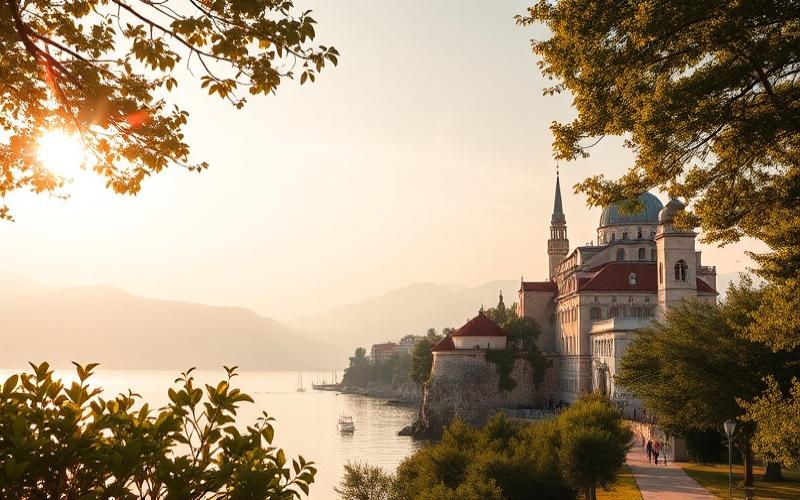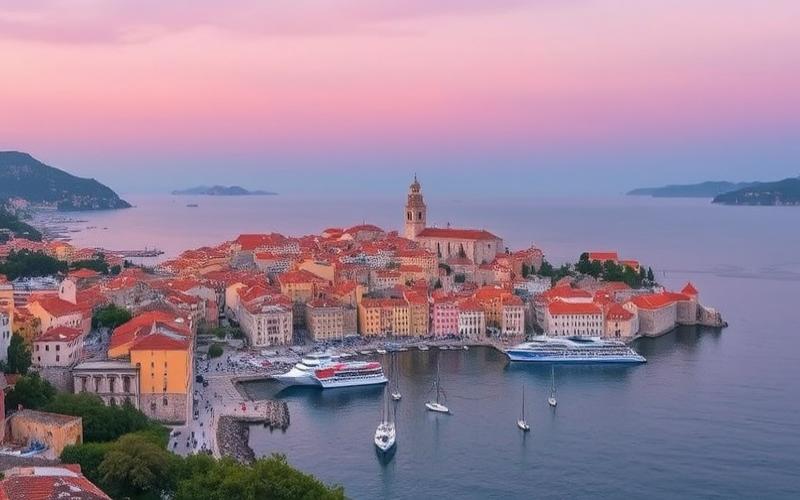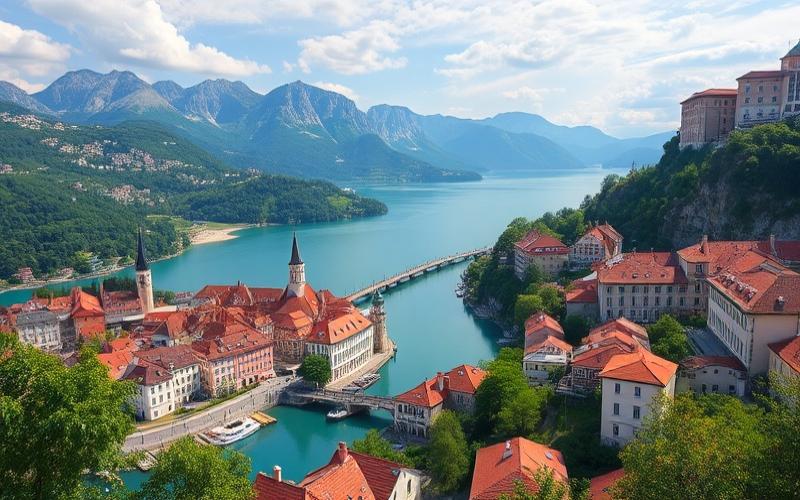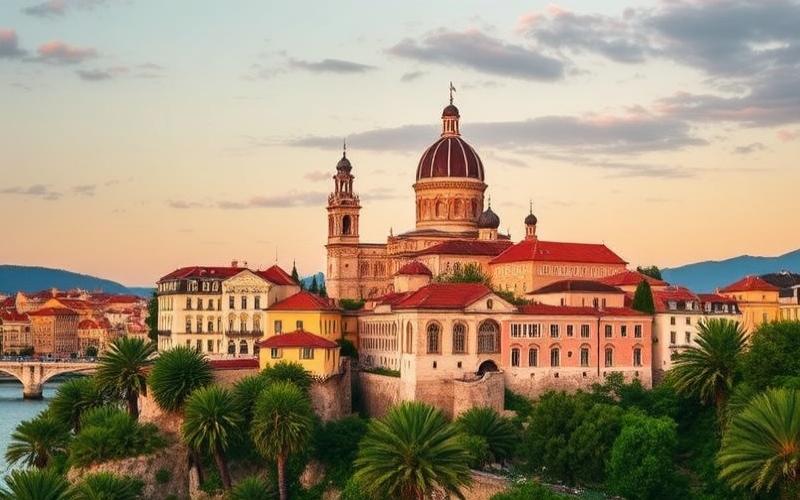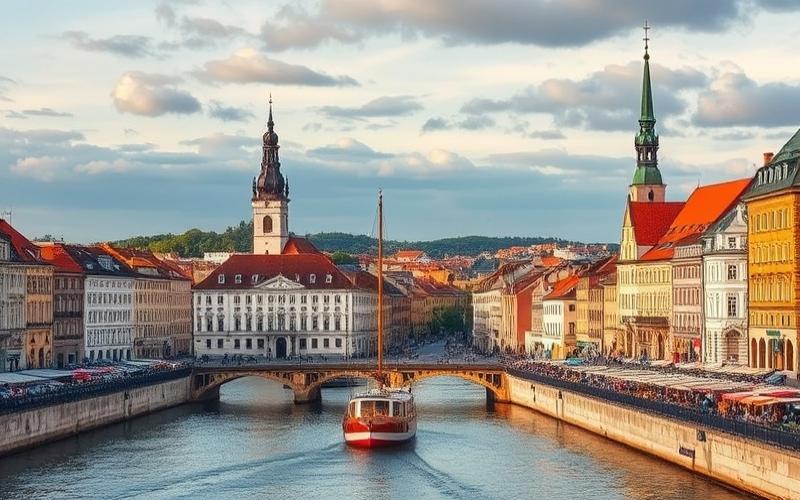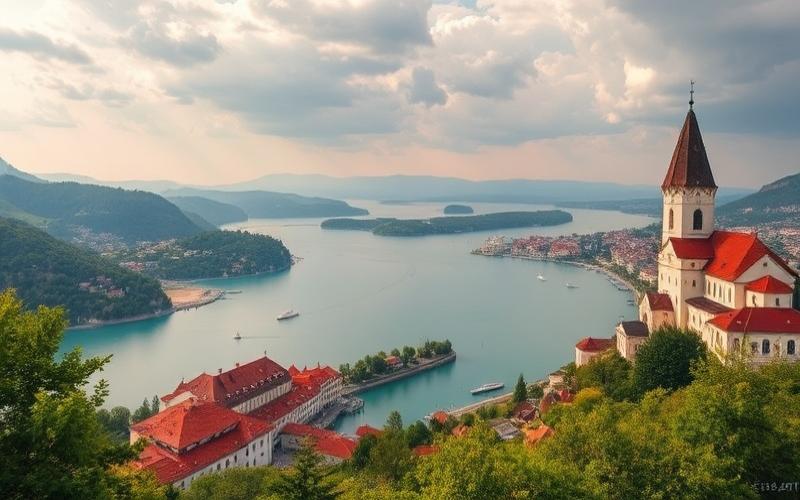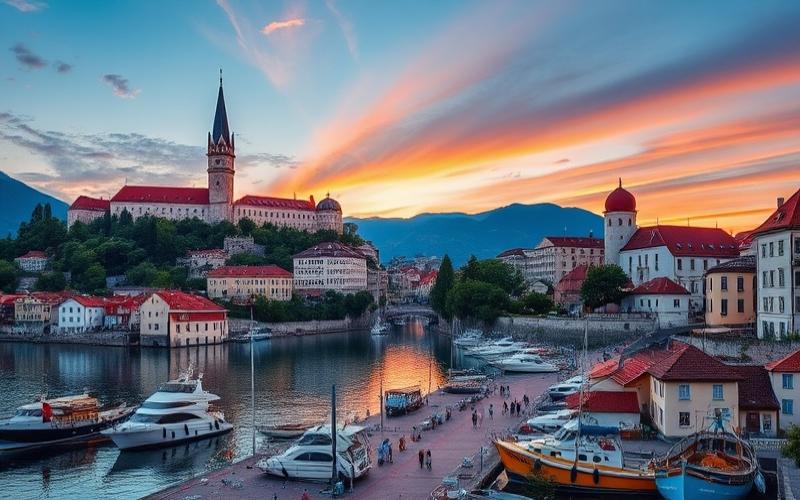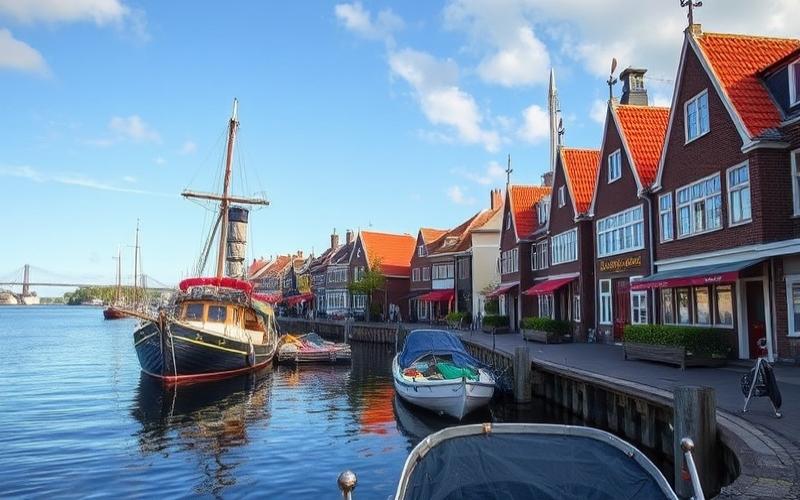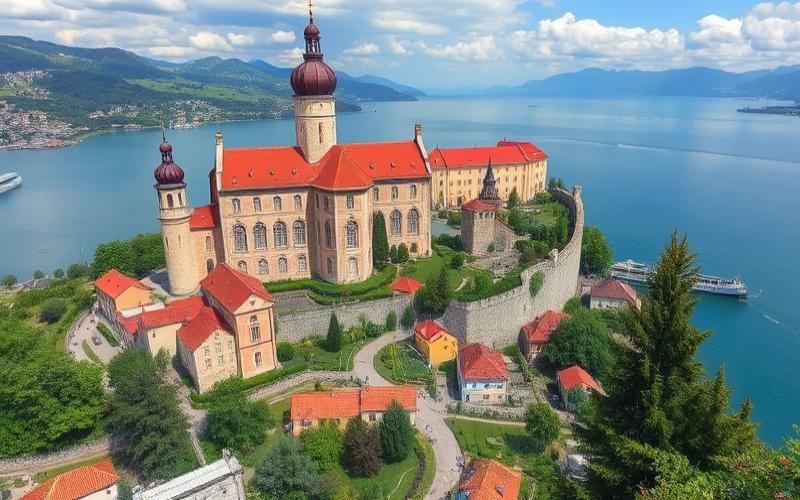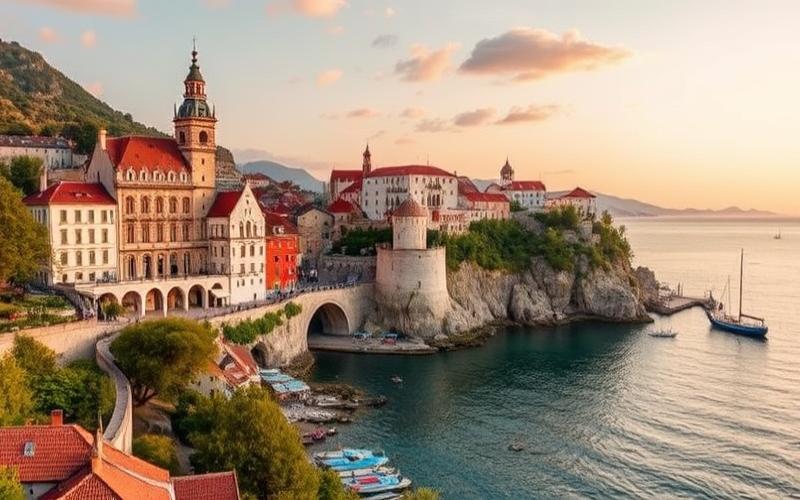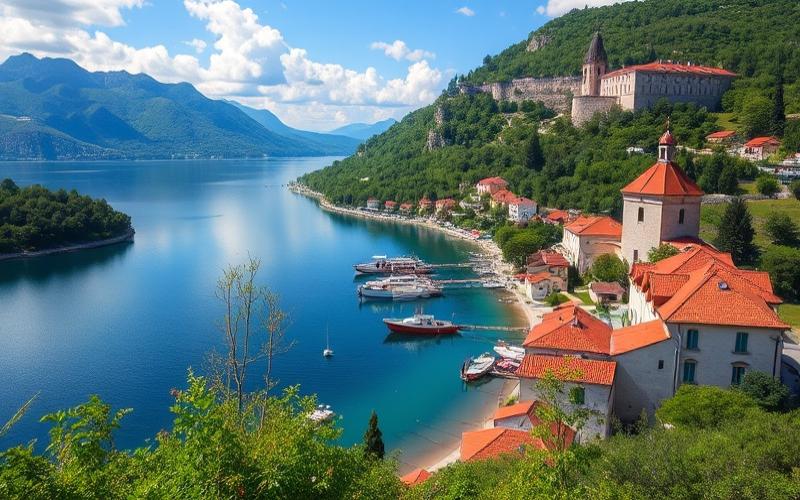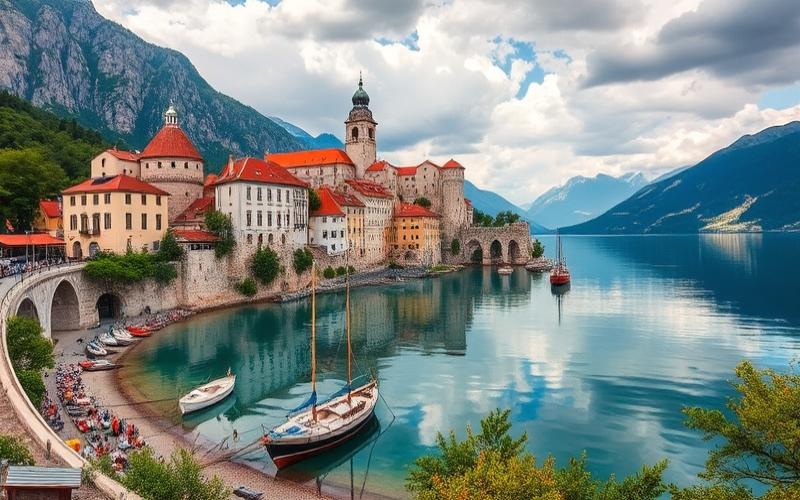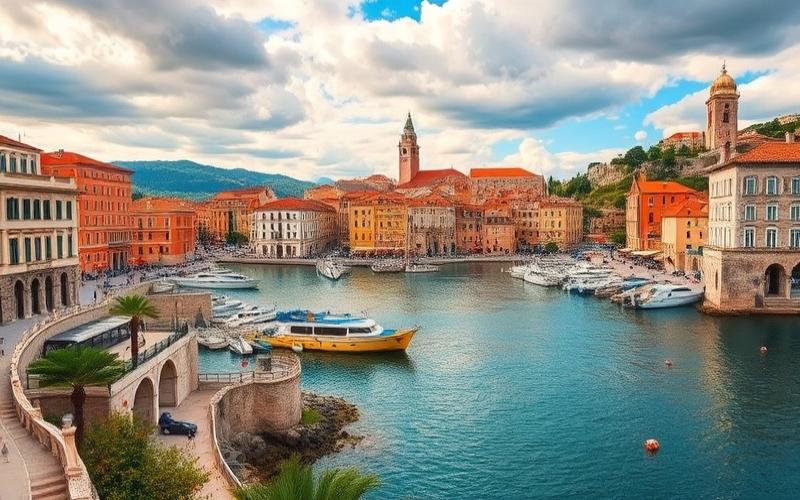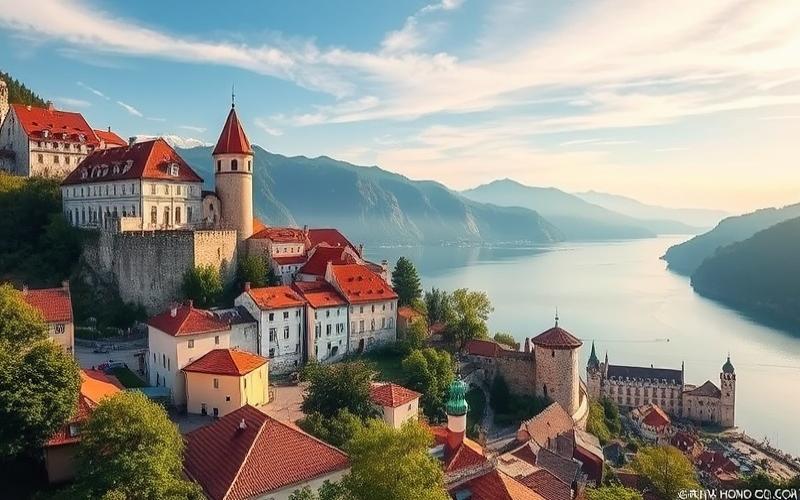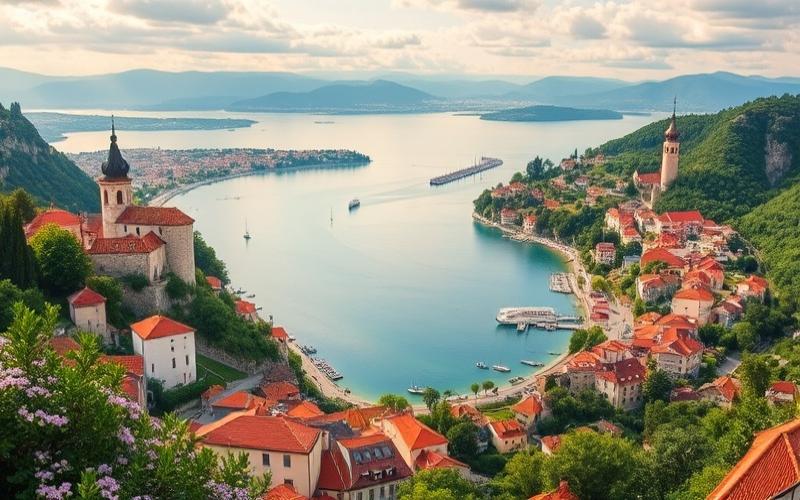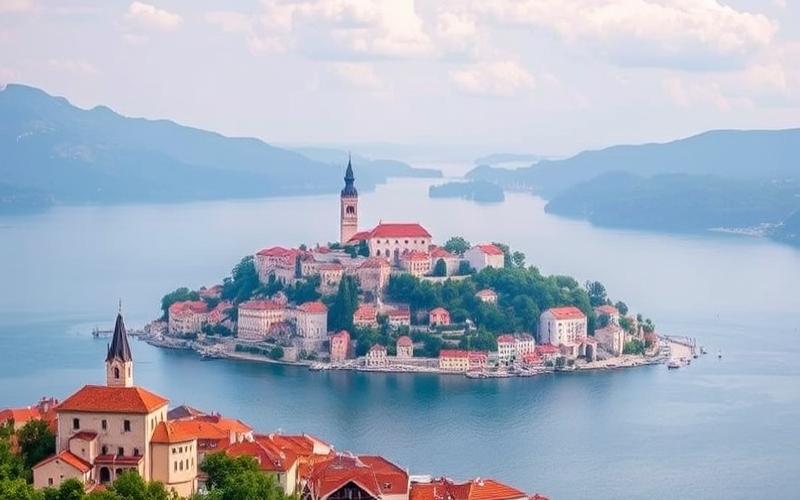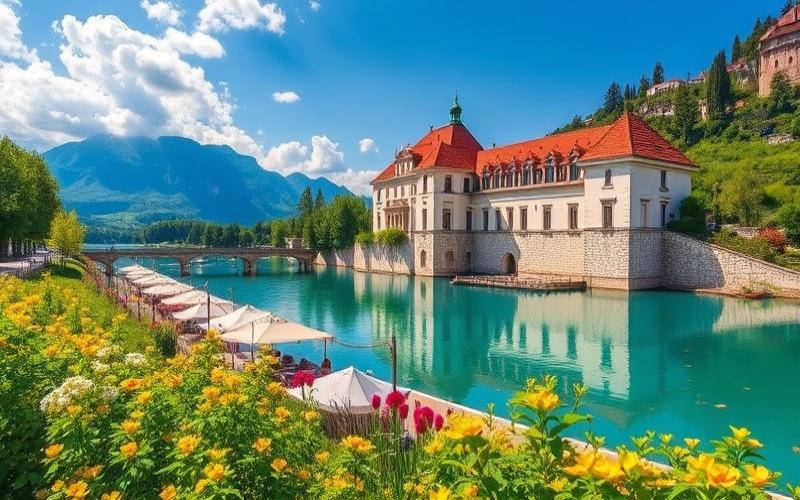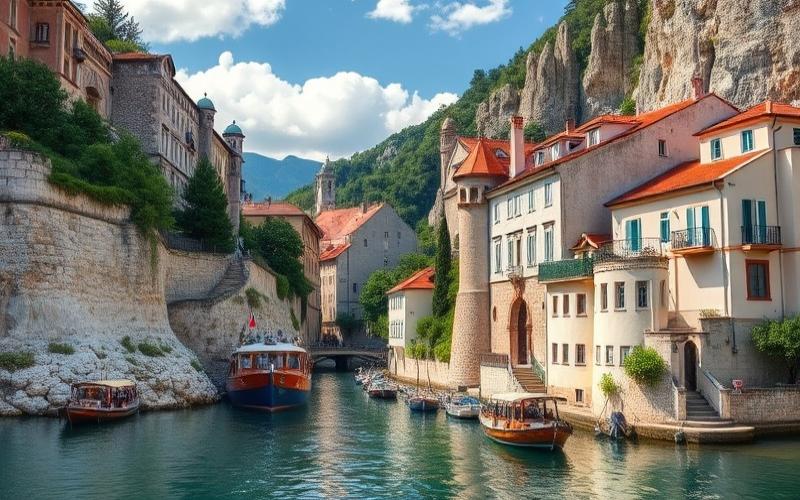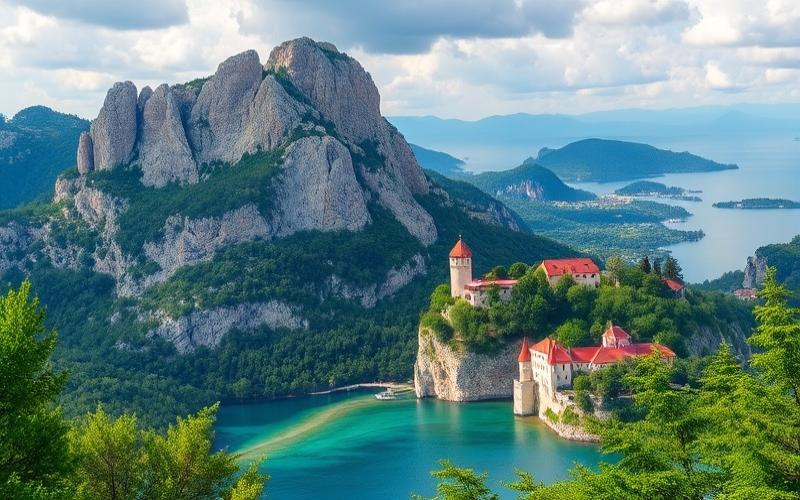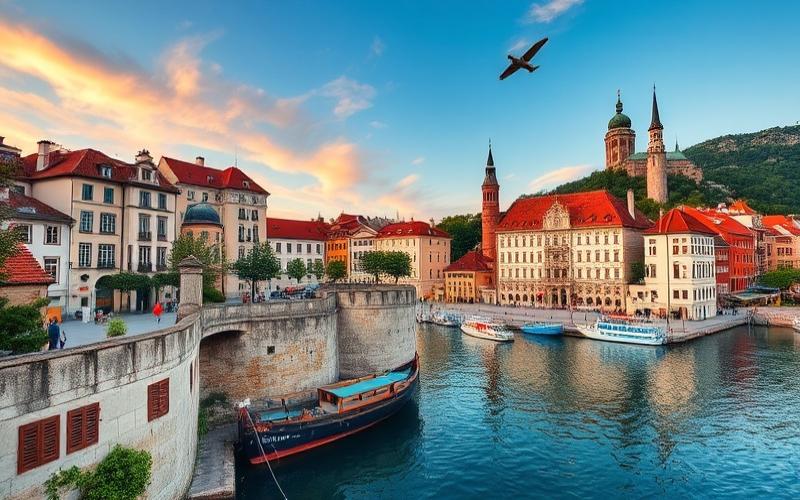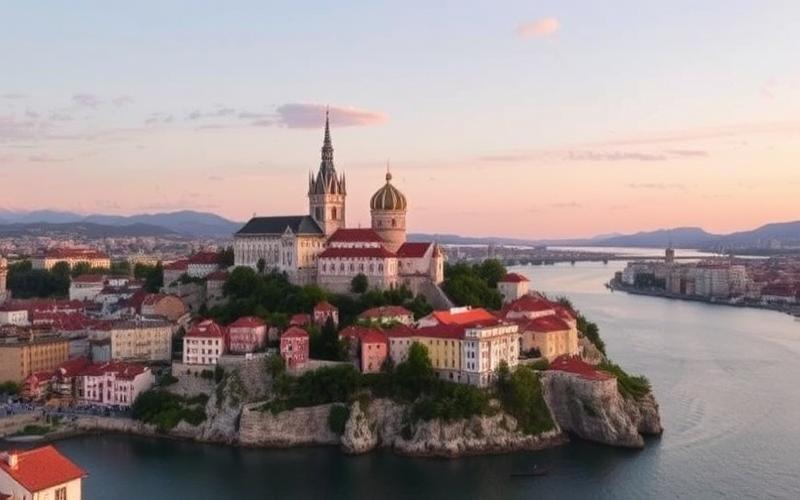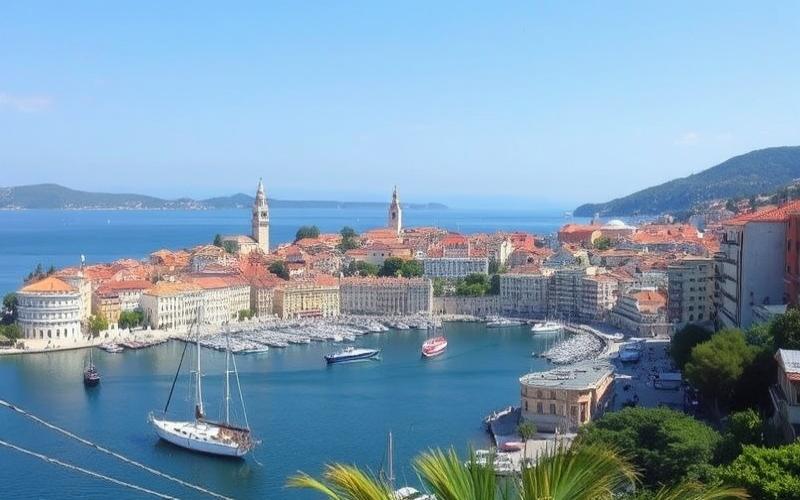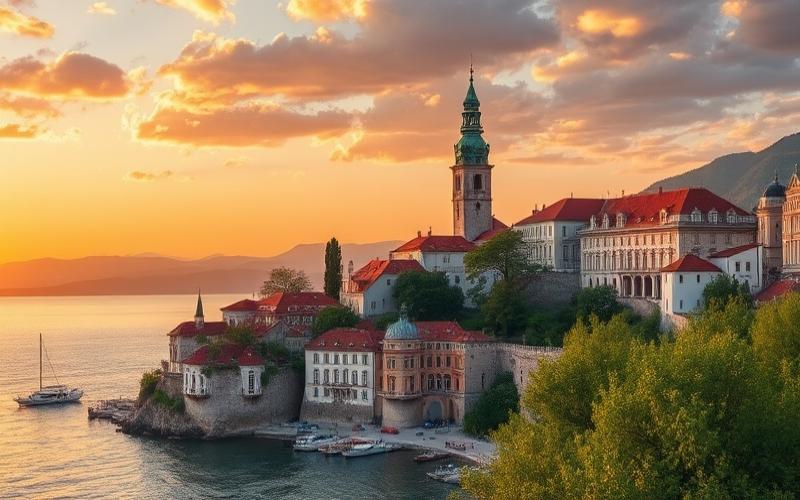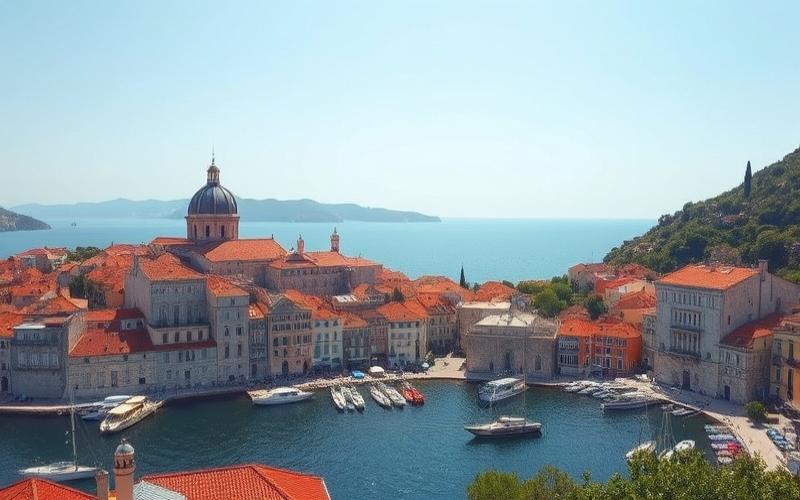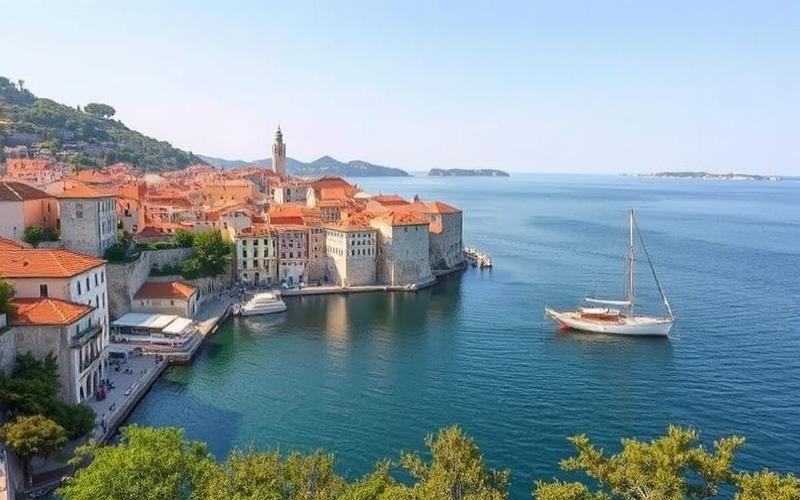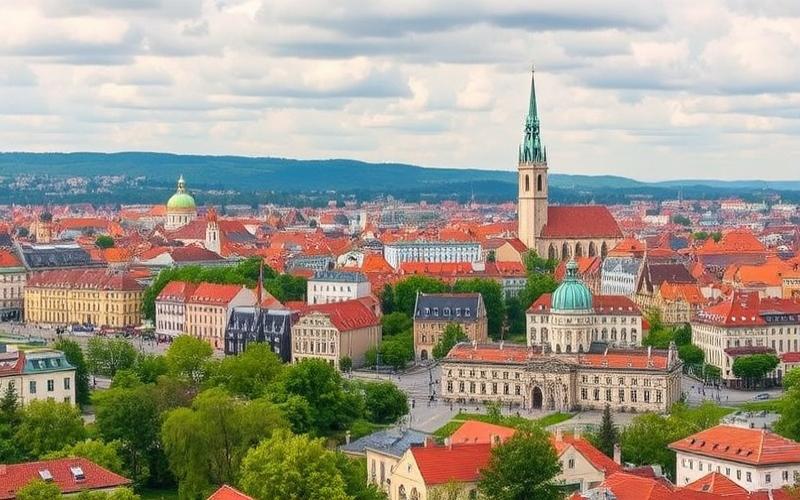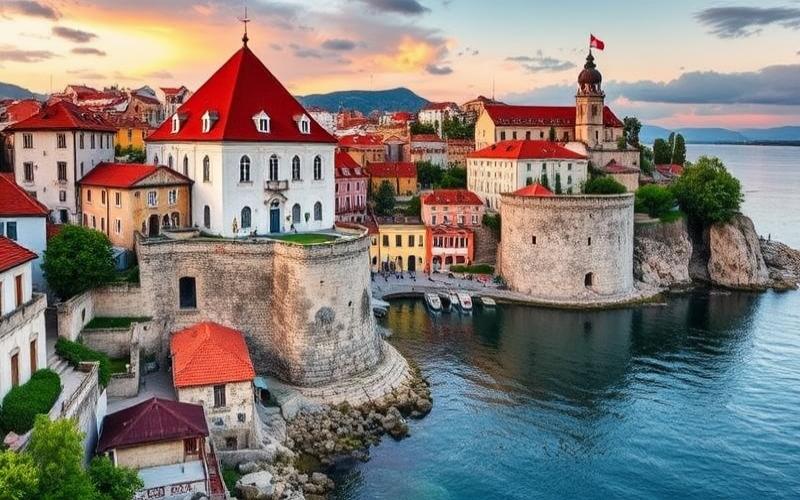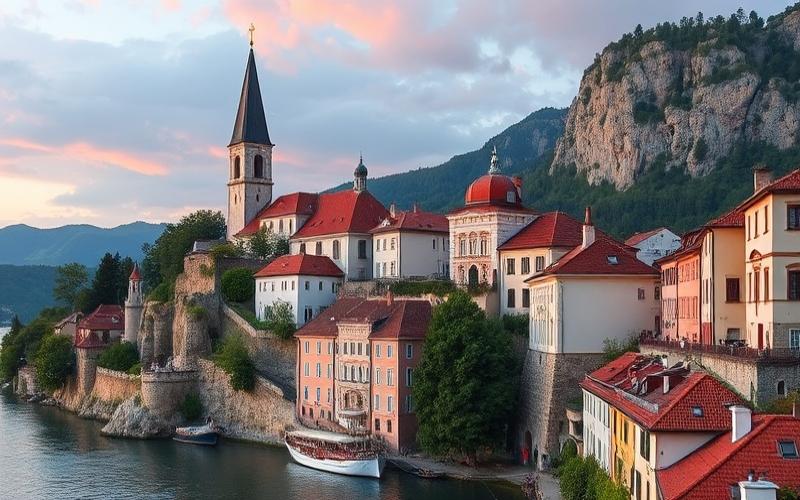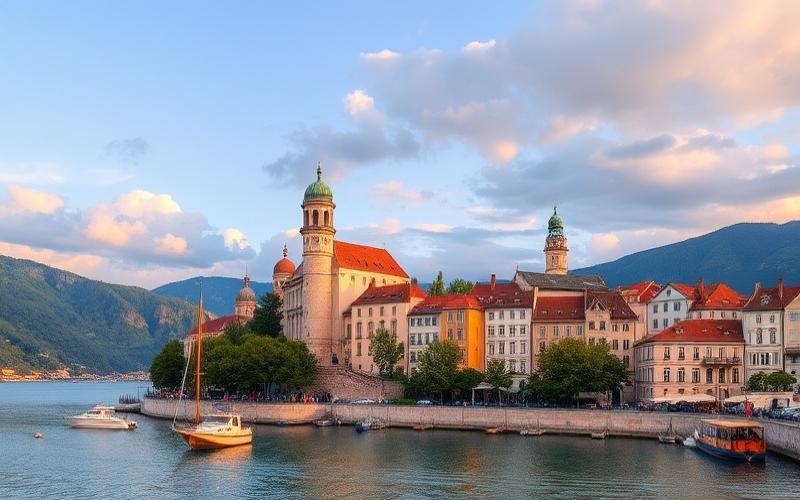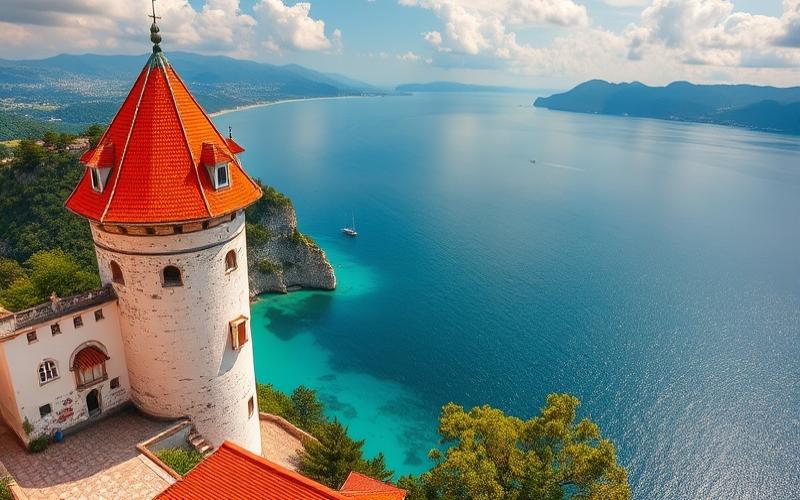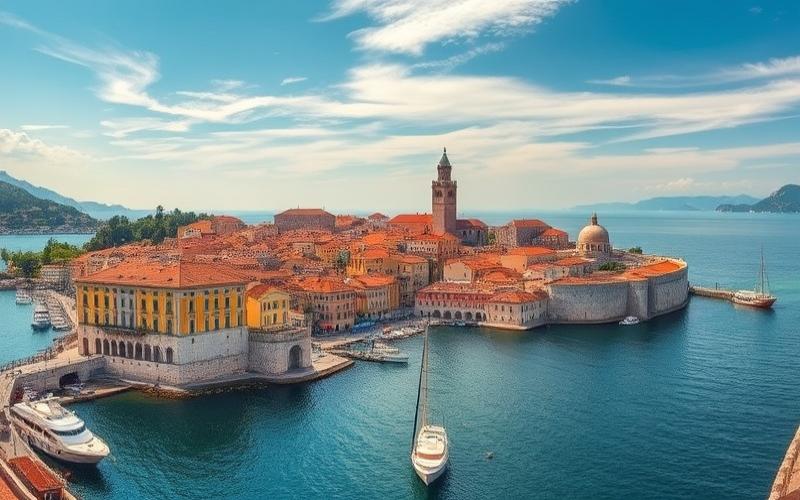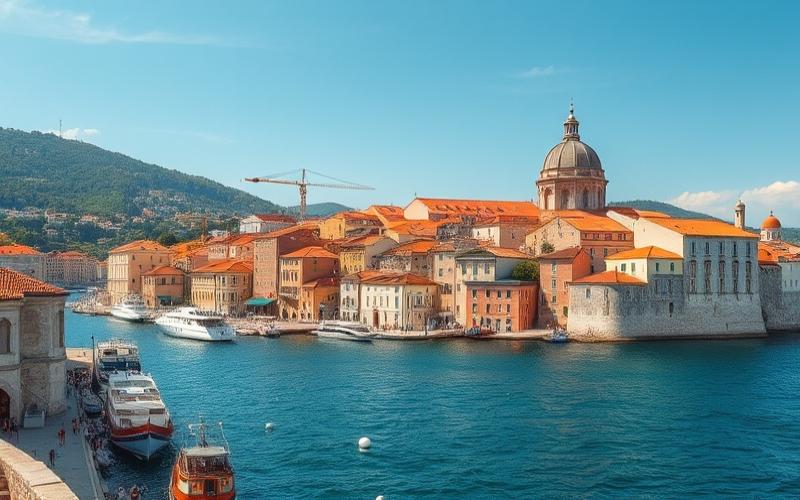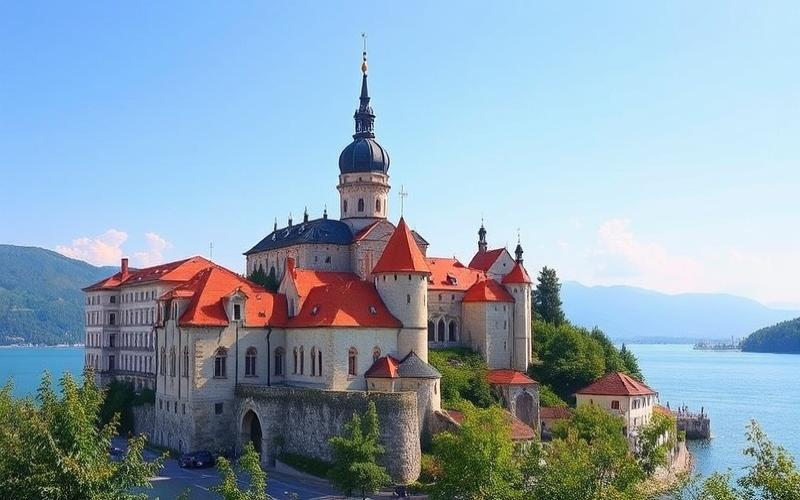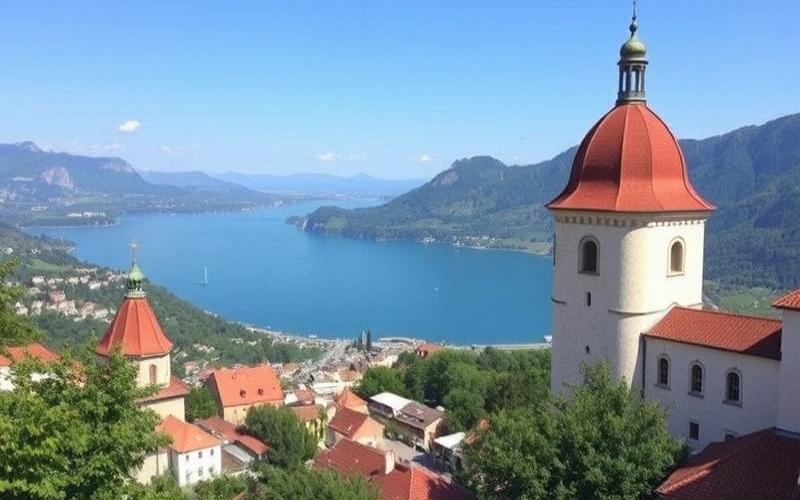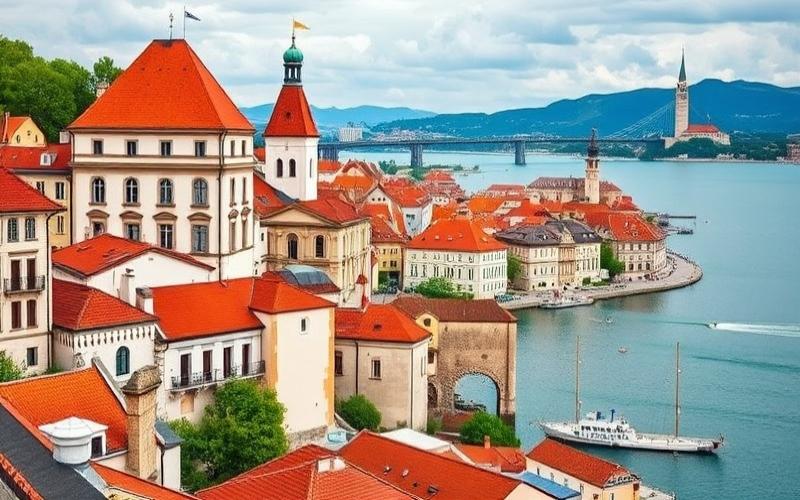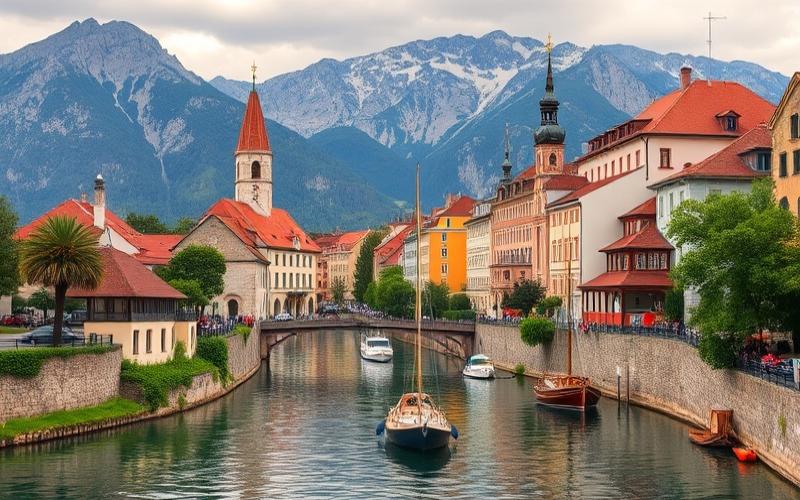
 Published on and written by Cyril Jarnias
Published on and written by Cyril Jarnias
In Croatia’s dynamic real estate landscape, an innovative trend is rapidly emerging: co-living spaces, which are transforming how people live and interact. As this country, known for its picturesque coastline and rich cultural heritage, attracts more young professionals and expatriates, these collaborative living spaces offer a solution combining comfort, affordability, and community.
Co-living spaces present a modern and flexible approach to housing, meeting the growing needs of millennials and digital nomads seeking authenticity and social connection. Let’s explore together how this new way of living is revolutionizing the Croatian real estate market and what it means for the future of shared lifestyles.
The Benefits of Co-living Spaces in Croatia
Co-living spaces in Croatia effectively meet the growing demand for affordable and flexible housing solutions, particularly sought after by young professionals and remote workers. Rising real estate prices and declining homeownership rates among young adults in Europe explain the growth of this model, which allows for cost sharing and offers all-inclusive packages, often 30 to 40% cheaper than traditional rentals.
Financial and Practical Advantages of Co-living:
| Advantage | Description |
|---|---|
| Cost Sharing | Rent, utilities, internet, cleaning and other services included in a single reduced rent |
| Flexibility | Individual rental contracts, short or long stays, without binding commitments |
| Included Services | Furnished spaces, cleaning, high-speed Wi-Fi, sometimes gym or laundry facilities |
| Zero Initial Investment | No need to buy furniture or equipment |
Community and Social Benefits:
- Common areas (living rooms, kitchens, shared gardens, rooftops) that promote meeting and exchange.
- Regular organization of social activities: parties, group dinners, workshops, cultural outings.
- Reduced isolation, support for newcomer integration, creation of professional and friendly networks.
- Survey: 64% of co-living residents report feeling less lonely after moving in.
Adaptation to Remote Workers and Digital Nomads’ Lifestyles:
- Ergonomic workspaces, meeting rooms, high-speed internet suitable for remote work.
- Location in central neighborhoods, well-served and popular with expatriates, facilitating access to transportation, coworking spaces and cafes.
Synergy with Local Culture and Croatian Environment:
- Co-living spaces in Croatia benefit from an exceptional natural setting (sea, islands, mountains) and a culture of conviviality.
- The relaxed atmosphere of the coast, nightlife in cities like Split or Zagreb, and proximity to tourist sites offer a unique experience.
- The Mediterranean lifestyle, focused on sharing and community, aligns perfectly with the co-living spirit.
Concrete Examples of Successful Co-living in Croatia:
| Company / Space | Location | Key Features |
|---|---|---|
| Zadar Coliving | Zadar | Near the sea, coworking space, international community |
| Outpost Coliving | Split | Modern spaces, social events, remote workers |
| Boonika Coliving | Zagreb | Focused on creatives, artistic workshops, local and expat community |
Data and Recent Trends:
- The share of young adult homeowners in Europe dropped from 64% to 58% between 2015 and 2023.
- In Croatia, demand for housing with shared spaces and pooled services is growing strongly, driven by millennials and Gen Z.
- Platforms like Coliving.com or Flatio simplify the search and booking of housing suited to this lifestyle, with thousands of offers in Croatia.
Co-living in Croatia combines accessibility, flexibility and conviviality, while leveraging the attractiveness of the natural setting and local culture, to appeal to young professionals, remote workers and expatriates.
Good to Know:
Co-living spaces in Croatia offer an ideal solution for young professionals and remote workers seeking affordable and flexible housing. By allowing cost sharing for utilities, cleaning and amenities, these spaces reduce monthly expenses while promoting community living. Tenants enjoy common areas and integrated social activities that strengthen bonds between residents. The concept harmonizes perfectly with Croatian culture and the country’s rich natural setting, adding a unique and attractive dimension for locals and expatriates. Companies such as “Doma” and “Hygge” illustrate the growing success of co-living in Croatia, welcoming an increasing number of residents seeking a modern and collaborative lifestyle.
The Growing Popularity of Upscale Co-living in Croatia
Upscale co-living integrates as an innovative response to the rapid evolution of the Croatian real estate market, marked by the arrival of new occupant profiles and changing housing expectations.
Economic and Cultural Factors Favoring Upscale Co-living:
- Influx of Digital Workers: Croatia, particularly its coastal cities like Split, Dubrovnik, Hvar or Zadar, attracts more and more digital nomads, drawn by the Mediterranean quality of life, attractive cost of living and the country’s openness to visas for remote workers.
- Post-Pandemic Lifestyle Changes: The health crisis accelerated demand for more spacious, flexible housing with quality common areas, facilitating both remote work and social life.
- Search for Flexibility and Community: Young professionals, expatriates or freelancers seek housing solutions combining privacy, community living and absence of long-term commitment.
Examples of Cities and Regions Where Upscale Co-living is Developing:
- Split: Strong rental demand, especially in the historic center, where housing supply suitable for co-living is diversifying.
- Dubrovnik, Hvar, Zadar, Korčula: These tourist cities see emerging renovated or new properties, integrating premium services for a demanding international clientele.
- Dalmatia Region: Proliferation of modern villas or luxury apartments, often transformed into co-living spaces with pools, sea views, and upscale amenities.
Comparison with Other European Countries:
| Aspect | Croatia | Spain/Portugal/France | Germany/Netherlands |
|---|---|---|---|
| Target Audience | Digital nomads, expatriates, locals | Digital nomads, students, retirees | Young professionals, students |
| Offer | Villas, renovated apartments, design | Urban apartments, villas | Urban shared spaces |
| Included Services | Pool, gym, cleaning | Coworking, concierge, events | Workspaces, events |
| Price | More affordable than Western Europe | Variable, often higher | Rather high |
| Dynamic Regions | Split, Dubrovnik, Dalmatia, islands | Barcelona, Lisbon, French Riviera | Berlin, Amsterdam |
Characteristics of Upscale Co-living:
- Modern Design: Elegant interiors, high-end finishes, contemporary furniture, optimized living spaces.
- Included Services:
- Regular cleaning
- Access to common areas (living room, terrace, pool)
- High-speed internet connection, sometimes coworking space
- Concierge or professional rental management
- Flexibility: Short leases, no long-term commitment, possibility to choose length of stay.
- Community: Organization of events, spaces promoting meetings and mutual aid among residents.
Summary of Assets for a Diverse Clientele:
- Adaptation to new lifestyles (mobility, remote work)
- Comfort and standing of housing
- Integration into sought-after neighborhoods, often close to the sea or city center
- Competitive rates compared to major European cities
Upscale co-living in Croatia thus fits into a European dynamic, driven by changing practices, market internationalization and the quest for housing that is flexible, convivial and qualitative.
Good to Know:
In Croatia, the growing popularity of upscale co-living integrates into the dynamic evolution of its real estate market, particularly in cities like Zagreb and Split. This phenomenon is fueled by the influx of digital workers attracted by the country’s natural beauty and affordable cost of living, but also by post-pandemic lifestyle changes favoring flexible and community-oriented housing. These co-living spaces often offer all-inclusive services, such as cleaning and Wi-Fi, and showcase modern designs that appeal to a diverse clientele, ranging from young professionals to expatriates. Compared to trends in Germany or Portugal, where co-living is also booming, Croatia stands out with its innovative offers combining luxury and community experience. These spaces meet a growing need for social connection while allowing for privacy, making them particularly attractive in the current context of seeking well-being and flexibility.
Shared spaces play a central role in transforming conviviality and the sense of community among young people in Croatia, particularly in Zagreb and major coastal cities. These environments allow young people to experience a form of collective living adapted to contemporary expectations: flexibility, mobility and facilitated access to diverse social networks.
- Shared spaces promote:
- The development of strong social bonds, thanks to regular and informal meetings between residents.
- An inclusive community where mutual aid is valued, meeting the need for belonging felt by many urban youth.
- Rapid integration of newcomers, whether Croatian or expatriates; testimonials emphasize that “everyone knows each other” and that groups are open.
Social Benefits:
- Facilitation of Cultural Exchanges: increased cultural diversity through mixed profiles (local young professionals, international students, expatriates).
- Creation of an informal professional network conducive to sharing opportunities (temporary jobs, creative collaborations).
- Strengthened sense of psychological security through mutual support.
Economic Benefits:
- Significant Reduction in Housing Costs, particularly in large cities where average rent for an individual apartment remains high (500–700 EUR/month in Zagreb without utilities).
- Pooling of general expenses (around 180 EUR/month), making a better quality of life accessible on a limited budget.
| Type | Average Rent | Average Utilities | Access to Common Services |
|---|---|---|---|
| Individual Apartment | 500–700 EUR | ~180 EUR | Low |
| Shared Space | ≤450 EUR | Included/often reduced | High |
Co-living also represents a concrete adaptation to the modern lifestyle sought by the younger generation:
- Main expectations:
- Professional flexibility (hybrid work, remote work).
- Better work-life balance thanks to adapted common areas (multipurpose rooms, integrated coworking).
Resident Testimonial:
“I chose a shared space to save on my housing budget while developing my professional network. We regularly organize themed evenings or workshops – it’s enriching in every way.”
Statistics on the Evolution of the Phenomenon:
- Between 2021 and 2024, an estimated annual increase of 15% in the number of shared spaces opened in Croatia among the population under thirty-five.
- In Zagreb, nearly one in five young urban professionals report having already experienced co-living or considering this solution.
Synthetic List of Main Benefits Recognized by Croatian Users:
- Immediate reduction in housing-related stress
- Accelerated social integration process
- Facilitated access to temporary or flexible employment
- Creative stimulation through intercultural exchanges
The rapid rise of shared spaces thus illustrates their ability to effectively meet modern aspirations while strengthening the local community fabric among young Croatian generations.
Good to Know:
Co-living spaces in Croatia are redefining how young people perceive conviviality and community life, fostering enriching cultural and professional interactions. These shared spaces offer considerable economic benefits by allowing a reduction in housing costs, which is crucial in a context where real estate prices are rising. According to a recent study, these spaces have seen a 30% increase in popularity among Croatian youth, attracted by the flexibility they offer to balance work and personal life. The modern and collaborative living environment provided by these spaces meets new expectations related to remote work and professional mobility. Resident testimonials highlight the importance of collaborative workshops and community events for the development of professional networks. Moving beyond the isolation often associated with urban life, these shared spaces harmonize young people’s daily lives with their professional and personal ambitions.
The Impact of the Digital Community on the Rise of “Co-living Spaces”
Co-living is a shared lifestyle that combines private and common spaces in residences designed to foster conviviality, mutual aid and a sense of belonging, while meeting the flexibility and connectivity needs of young professionals and digital nomads. This model developed in response to the rise of remote work, digitalization of lifestyles and the search for affordable and flexible housing solutions.
Evolution and Digital Trends of Co-living:
- Co-living relies on a “turnkey” organization: furnished, connected, ready-to-live housing with shared services (Wi-Fi, cleaning, coworking spaces, etc.).
- 71% of co-living residents report feeling less lonely, highlighting the importance of community connection and social support in these spaces.
- The model particularly attracts millennials and Gen Z, for whom digital mastery and the sharing economy are natural.
- Digitalization has allowed co-living to spread rapidly, with over 39,000 rooms distributed in more than 70 countries by 2025.
Influence of Online Platforms and Social Networks:
- Specialized platforms (Coliving.com, Nomad List, etc.) facilitate the search, booking and comparison of co-living spaces through intuitive interfaces, user reviews and interactive photos.
- Social networks (Instagram, Facebook, LinkedIn) play a central role in promoting spaces: they allow sharing testimonials, organizing online events, disseminating immersive content (virtual tours, live streams, stories).
- Online groups and forums facilitate advice exchange, problem solving and connection between future residents.
Examples of Co-living Spaces in Croatia Using Digital Tools:
| Space Name | City | Digital Tools Used | Target Audience |
|---|---|---|---|
| Zadar Digital Nomad House | Zadar | Interactive website, Slack community, Instagram | Digital nomads |
| Impact House | Split | Online booking platform, newsletter | Entrepreneurs, freelancers |
| Outpost Coliving | Dubrovnik | Private Facebook groups, Meetup events | Young professionals, creatives |
- These spaces often offer mobile applications to manage booking, payment, communication between residents and organization of internal events.
- Use of collaborative tools (Slack, Discord, Trello) promotes community management and daily animation.
Analysis of Virtual Communities and Sense of Belonging:
- The digital community builds well before arrival: group chats, welcome video conferences, exchanges on social networks.
- Residents participate in workshops, virtual coworking sessions, online games or collective challenges, strengthening group cohesion.
- Mutual aid and resource sharing (local tips, professional recommendations, psychological support) are facilitated by digital communication.
- 83% of co-living community members surveyed report that the presence of an active virtual network played a decisive role in their residence choice.
Future Perspectives for Co-living in Croatia in the Digital Era:
- Increasing integration of technological solutions (IoT, smart space management, community platforms) should strengthen the personalization of the residential experience.
- Croatia, already recognized as a leading destination for digital nomads, could see the emergence of interconnected national co-living networks, facilitating internal mobility and experience exchange.
- Data from platforms will refine offers and anticipate needs, making co-living more attractive and resilient to labor market and lifestyle changes.
- The challenge will be to maintain a balance between virtual and in-person, so that technology remains a lever for inclusion and social connection, not a factor of isolation.
Key Takeaways:
Co-living in Croatia relies on the power of the digital community to attract, connect and retain its residents, making digital tools an essential pillar of its growth and sustainability.
Good to Know:
Co-living spaces in Croatia are experiencing considerable growth, stimulated by the rise of digital trends transforming our lifestyles. The co-living concept, which offers a balance between private life and shared spaces, has quickly adapted to digital influences. Online platforms and social networks play a crucial role in facilitating the promotion and integration of these spaces, and initiatives like HUB385 in Zagreb illustrate the effective use of digital tools to attract residents. These spaces also benefit from virtual communities emerging around them, contributing to strengthening the sense of belonging among residents. According to a recent Colliers International study, 60% of young professionals in Croatia prefer flexible housing solutions, encouraging the expansion of co-living. In the future, digital interactions and technology will continue to shape the co-living model in Croatia, offering innovative solutions to meet growing collaborative housing needs.
Disclaimer: The information provided on this website is for informational purposes only and does not constitute financial, legal, or professional advice. We encourage you to consult qualified experts before making any investment, real estate, or expatriation decisions. Although we strive to maintain up-to-date and accurate information, we do not guarantee the completeness, accuracy, or timeliness of the proposed content. As investment and expatriation involve risks, we disclaim any liability for potential losses or damages arising from the use of this site. Your use of this site confirms your acceptance of these terms and your understanding of the associated risks.

